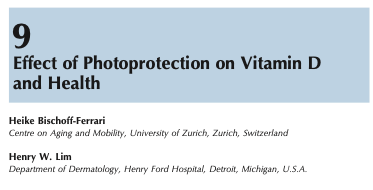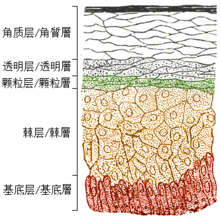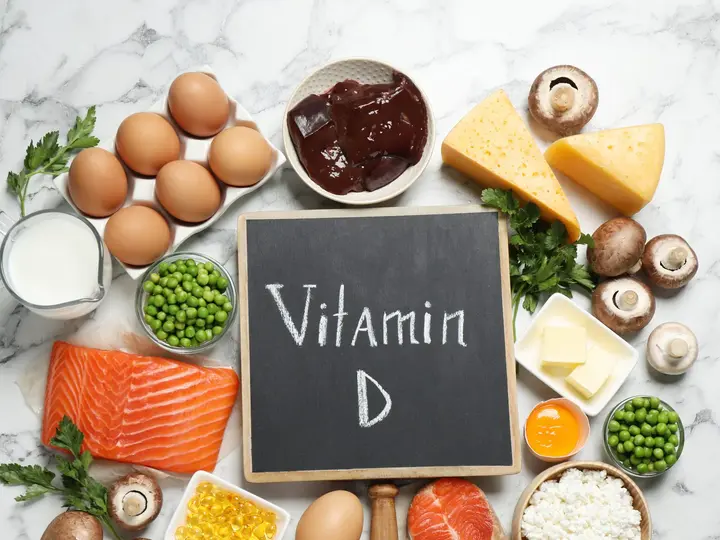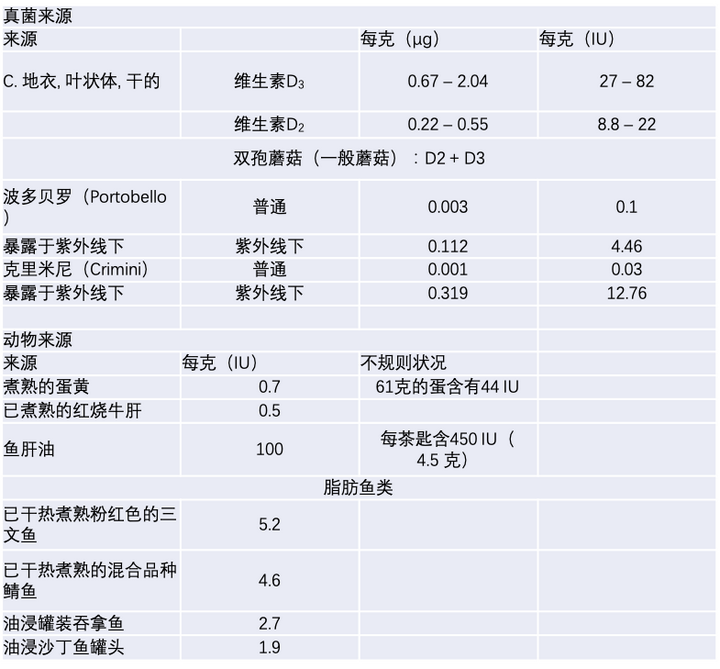Thank you Peng Gong @Formulator Markgo , I know this question, I have read it in the book.

Enlightened comprehensive meaning will indeed have an impact.
Vitamin D is an alternative to various vitamins, and it is synthesized in the skin. Specifically, in the spinous and basal layers of the epidermis.

The raw material is 7-dehydrocholesterol, and under the action of ultraviolet rays, electron 6 undergoes a cis-rotational electrocyclization reaction to form previtamin D3.

Pre-vitamin D3 forms vitamin D3 slowly, and the whole process can take up to 12 days at room temperature.

There is no shortage of 7-dehydrocholesterol in the skin, and converting it into pre-vitamin D3 is a key step in the reaction limit, which requires ultraviolet catalysis with a wavelength of about 300 nanometers, which is what we often call the UVB band.
This is vitamin D3 (cholecalciferol) that the body can synthesize, and white mushrooms synthesize vitamin D2 (ergocalciferol).
Both forms of vitamin D are converted into calcidiol by our liver, and this is the vitamin D index 25(OH)D in plasma.
Calcitriol is further converted by the kidneys to calcitriol (1,25(OH)D), the final active form of vitamin D, whose primary role is to regulate calcium and phosphate concentrations and promote healthy bone growth and weight. plastic. Calcitriol also has other effects, including effects on cell growth, neuromuscular and immune function, and reducing inflammation.
Vitamin D deficiency is not limited to calcium deficiency and rickets, but can also affect muscle strength and increase the risk of conditions such as high blood pressure and diabetes.
Well that’s it for pretending to be a nutrition expert.
Since vitamin D is synthesized in the skin, it is naturally inextricably linked to the state of the skin and the way of skin care.
First of all, the spinous layer and basal layer that produce vitamin D are below the stratum corneum, and the melanin in the stratum corneum absorbs UVB, so skin color has a great influence on vitamin D. The darker the skin, the less efficient it is to produce vitamin D in the sun.
The same is true for sunscreen. In the laboratory, only SPF8 sunscreen can cause the increase of 25(OH)D in blood to be significantly inhibited after one MED-equivalent light.
In a control experiment, a group of 24 people used sunscreen and the other group of 19 people did not use sunscreen. After two years, the plasma level of 25(OH)D in the group without sunscreen was significantly higher than that in the group with sunscreen.
The difference is even greater between people who work indoors and those who work outdoors.
The connection does exist, and I’m not going to cover up the facts with conscience in order to sell some sunscreen.
Also, if you are tanned, your ability to synthesize vitamin D from the sun also decreases.
If you want to be healthy and beautiful, you should eat more foods that are supplemented with vitamin D. In addition to the white mushrooms that can be supplemented with vitamin D2, egg yolks, fish fat, and milk and dairy products with vitamin D are all added. Can help us supplement vitamin D.

Eating a healthy diet is very important. Vitamin D is a fat-soluble vitamin, so it is better absorbed if it is made greasy.

Source: Zhihu www.zhihu.com
Author: Curly Fu Sauce
[Zhihu Daily] The choice of tens of millions of users, to be a big cow to share new things in the circle of friends.
click to download
There are 18 more answers to this question, see all.
Further reading:
How does sunscreen affect vitamin D?
How to find the balance between being tanned and being in the sun for calcium absorption?
This article is reproduced from: http://www.zhihu.com/question/529871750/answer/2456745605?utm_campaign=rss&utm_medium=rss&utm_source=rss&utm_content=title
This site is for inclusion only, and the copyright belongs to the original author.